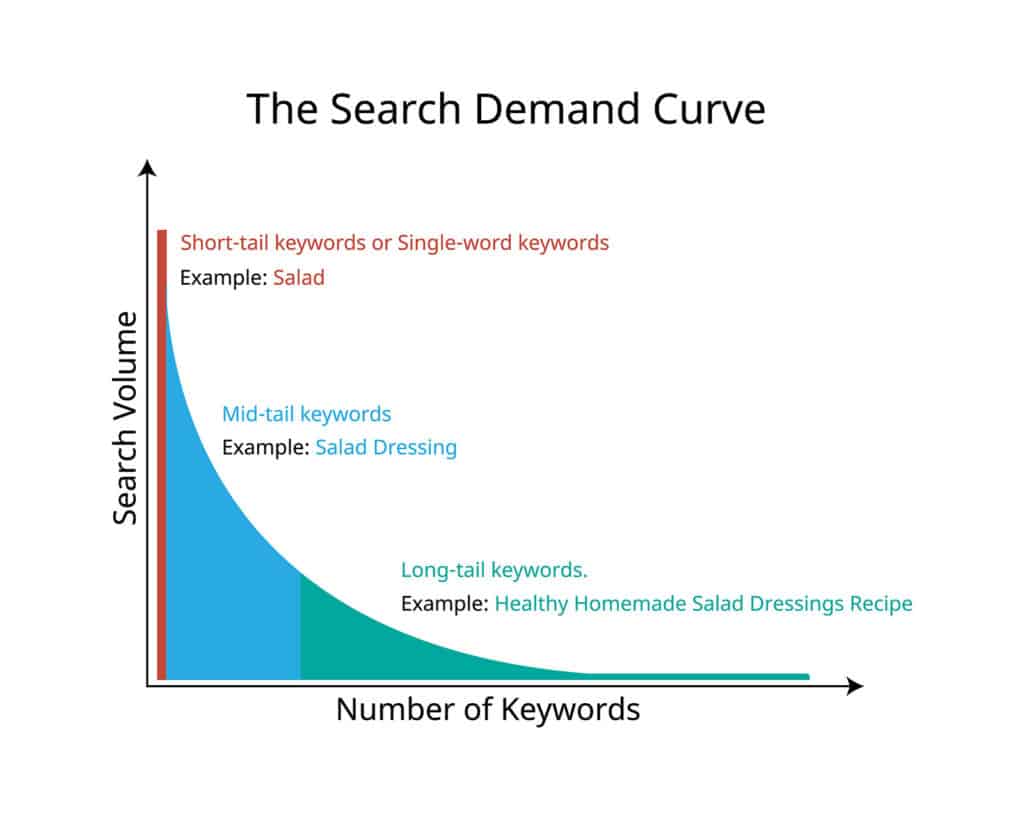Every website or webpage operator can benefit from knowing search engine optimization (SEO) techniques that will bring traffic to their site as they aim to get a chance of ranking on Google search results’ first page and reach potential customers. Creating engaging, relevant content built around carefully selected, effective keywords is essential to attracting users and generating conversions. Skillful SEO specialists are aware that using criteria like relevance, competition, monthly search volume or search traffic, SEO keyword value, CTR or click-through rate, difficulty score, and user’s search query will help them research and select keywords more effectively. You can use these criteria, in conjunction with knowledge about market trends, long-tail keywords, and SERP opportunities, to optimize your content marketing strategies and ensure the success of your SEO campaigns.
To deliver relevant content to your target audience, it’s essential to integrate keywords that will drive traffic to your website and improve its ranking. You must be mindful of building and maintaining a strong brand identity while taking care not to overuse competitive keywords. SEO specialists who manage high-ranking websites strategically select keywords that will connect with their target audience. It’s important to avoid choosing keywords that could attract invalid or irrelevant traffic and optimize for relevant user intent.
Below, we’ll go over some criteria and strategic tips you can consider and use to improve your SEO performance.
Table of Contents
Relevance
It’s important to select keywords that align with your users’ search queries. Choosing the right keywords with your users’ search intent in mind can help you optimize your website. Good keywords will drive more relevant traffic to your landing page or product page, increase page clicks, lower your bounce rate, and lead to higher conversion rates.

To find keywords that will align with your users’ search queries, you can consider what they are looking to find on your site, identify their specific needs, and assess your competition. While good keywords may have high search volumes, they will also meet your users’ needs and highlight your authority.
You should always integrate selected keywords with your site’s content and ensure that they have relevance. This will improve the probability that your site will rank higher, which should lead to more traffic and conversions.
Search Volume
To assess the demand for specific keywords, it helps to use the search volume index to learn how search volume correlates to their popularity. This metric indicates the demand for a particular search term or keyword by showing how many searches were made for that keyword within a given period of time. Search volume data can help you discern how much competition there is for a keyword and give insights into its relevance and its potential influence on organic traffic.
Keyword popularity and seasonal, viral, and other market trends all influence the search volume index. By reviewing search volume index data, you can find high-demand and seasonal keywords and sometimes predict industry shifts, which can help you create timely and relevant content. It also helps you optimize your keyword selection to create high-visibility content that aligns with search demand and user intent. Comparing the search volume for various keywords allows you to increase the impact of your SEO strategy.
Competition
Keyword difficulty is a score between 0-100 that predicts how hard it will be for a particular keyword to rank at the top of organic search results, how much competition there is for the keyword, and how many resources you’ll need to expend to rank higher. Keywords with high scores are harder to rank. Several factors determine the score, including the quantity and quality of backlinks, content quality, domain authority, and page authority.

Checking for keyword difficulty can help you target keywords effectively. It’s wise to look for a balance between keyword difficulty and search volume by targeting low-competition to moderate-competition keywords that have desirable search volumes.
Keyword Value
Any keyword advertisers are willing to pay for is likely to be valuable, and the most in-demand keywords have the highest keyword value. Cost per click can indicate keyword value for pay-per-click campaigns. The average cost that an advertiser would pay per click to advertise on Google corresponds to its keyword value.
Assessing commercial intent involves predicting how likely it will be that someone is or becomes a lead or a customer while they search. Customers who want to buy as soon as possible use commercial intent keywords to search for products and services, so you can use these keywords to generate sales. To evaluate commercial intent, use Google Adwords or Google Ads to see how many people advertise using a specific keyword and do research to look for a solution.
Types of commercial intent keywords include “buy now” and “product” keywords. Words like “buy,” “deal,” “coupon,” and “shipping” are examples of buy now keywords. They tend to correlate to high conversion rates because people use them to search just before they commit to a purchase. Product keywords include words like “cheap,” “best,” “luxury,” “Adidas,” “iPhone,” “home internet service,” “Oxford shirts,” and more that target a particular attribute, product category, service, or brand name.
Taking Advantage of Long-Tail Keywords
When people make a voice search or search to make a purchase, they are more likely to use long-tail keyword phrases. Long-tail keywords are specific and relatively less common than short-tail keywords. Because they tend to have lower search volumes and less competition, they can lead to higher conversion rates with less competition if used correctly. They can also provide higher search quality, which can help specialized websites rank higher on search engines and be more competitive. Long-tail keywords can help increase the visibility of smaller websites by combining niche terms into specific terms that capture user intent and drive traffic. These keywords tend to have high relevance and correlate to higher conversion rates.

To find long-tail keywords that align with your target audience, it’s important to understand their search behavior, needs, goals, and preferences. As you design content, make a list of potentially relevant keywords that reflect the turns of phrase and natural speech patterns your target market uses every day. Consider what, specifically, your target market might be searching for to create targeted, adjective-heavy phrases that will reduce keyword competition and provide high value.
SERP Features and Opportunities
SERP features are unique results on Google search engine results pages (SERPs) outside of traditional organic listings, including elements like featured snippets, local packs, and knowledge panels. Understanding Google’s SERP layout makes it easier to place keywords that will improve a user’s search experience by returning relevant information.
Strategies for placing keywords that are likely to display featured snippets include focusing on long-tail keywords. The more words a user types into a search box, the higher the likelihood that the query will return a featured snippet. Question-type searches that begin with words like “who,” “why,” “what,” and “how” are often easy to identify. Finding keywords that will return the local pack feature often includes adding the words “near me” or “near [location],” such as “donuts near me,” since Google can identify the user’s location when they search. To trigger a knowledge panel, use an SEO tool to identify the keywords that correlate to your domain in that knowledge panel and add them to your keyword list.
Tools for Keyword Research
Some of the best keyword research tools you can use to help you identify keywords on your next keyword research process, top-ranking keyword ideas, list of keywords, and new keywords include Google Keyword Planner, Google Analytics, Moz, SEMrush Keyword Magic, Ahrefs Keywords Explorer, and AnswerThePublic. Leveraging these tools will allow you to easily and efficiently gather specific data on keyword relevance, volume, and competition.

Selecting Keywords Strategically Will Improve Your Results
When selecting keywords for SEO, your main criteria should include keyword relevance, search volume, competition, and keyword value. Your target keywords should align your users’s searches with your website’s offerings so that you can connect with the people who want to find you. Select terms that are likely to generate conversions, and be strategic as you do your keyword research. The search landscape is always evolving, so it’s important to constantly analyze performance data and use it to refine your keyword strategy.
Contact SEO North to Bring out the Best in Your SEO Campaigns
Have you encountered challenges or discovered great strategies while selecting keywords for your website? We’d love to hear them! If you’re looking for a partner to enhance your SEO game in Ottowa, Canada, SEO North is here for you. Reach out to us today to discover how our team can help you generate more leads through SEO digital marketing.
FAQ
Which are the criteria used for selecting which keywords to target?
